Pros
Cons
Introduction
Product Overview
{{section_header}}{{section.name}}{{/section_header}}
Meet the Sony MDR-XB700s, in all their pillowy glory.
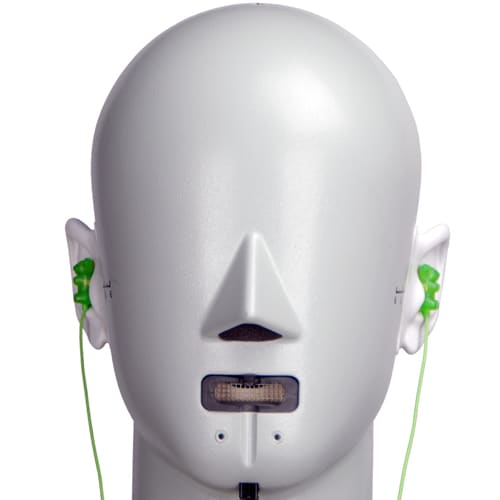
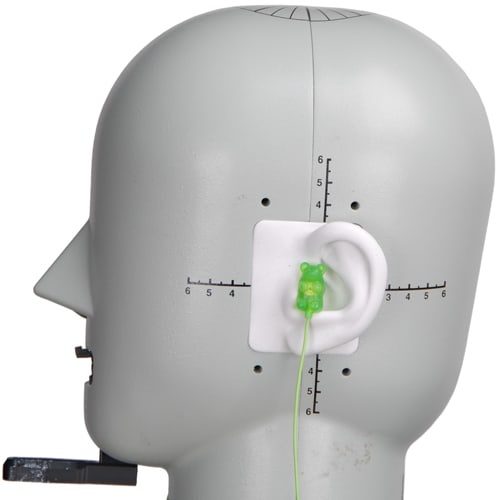
Speakers
{{section_header}}{{section.name}}{{/section_header}}
The speaker element, guarded by a super-thin mesh, is encircled by huge ear pads that a a pain to negotiate if you want to wipe down the mesh to clean.
Back
{{section_header}}{{section.name}}{{/section_header}}
Protecting the driver element on the backs of the ear cups is a metal housing. While fairly featureless, it is beautiful in its simplicity.
Band
{{section_header}}{{section.name}}{{/section_header}}
A point we'll return to later, the band of the {{product.name}}s is the perplexing outlier when compared to the amount of attention Sony paid to comfort with this set of headphones. Offering almost nothing in the way of padding, the metal band expands to fit your head, and also digs into your scalp over time.
Cable
{{section_header}}{{section.name}}{{/section_header}}
Flattened out over its entire length, the 4-foot cable of the {{product.name}}s is fairly robust, and not punctuated by a remote or microphone.
Capping off that cable is a standard 1/8th inch plug, meant for just about any mobile device.
The cord guards on the {{product.name}}s are fairly robust, as the ones leading out of the headphones themselves are guarded by thick rubber and metal.
In the Box
{{section_header}}{{section.name}}{{/section_header}}
Along with the headphones, the packaging for the {{product.name}}s includes a carrying pouch, and assorted documentation.
Durability
{{section_header}}{{section.name}}{{/section_header}}
These headphones certainly have a robust construction, but they don't have any features for repair of your cans should the cable break, or the driver is rattled out of the housing etc. They should withstand daily use, but try not to bang them around a lot, lest they break and be lost to the sands of time.
Aesthetics
{{section_header}}{{section.name}}{{/section_header}}
These headphones are huge. Like, really huge. The ear pads on the cups are super thick and really can't help but draw a lot of attention. Additionally, they do have somewhat shiny metal, making them almost impossible to ignore if you take them out on the street.
Frequency Response
{{section_header}}{{section.name}}{{/section_header}}
Given that the branding for the {{product.name}}s boasts a ton of bass, it's no surprise that the low end of frequencies is hilariously overemphasized. Beyond that though, the {{product.name}}s actually do a fair job of staying within our ideal limits, though their response is quite erratic. You may notice higher-pitched male voices and come cymbal sounds a little lost in the shuffle, but otherwise these are decent cans by this measure.

Click here for more information on our frequency response test.
Distortion
{{section_header}}{{section.name}}{{/section_header}}
The {{product.name}}s have a somewhat low level of general distortion, but nothing that will ruin your day or anything. In all likelihood, you'll never hear it in your listening experience.
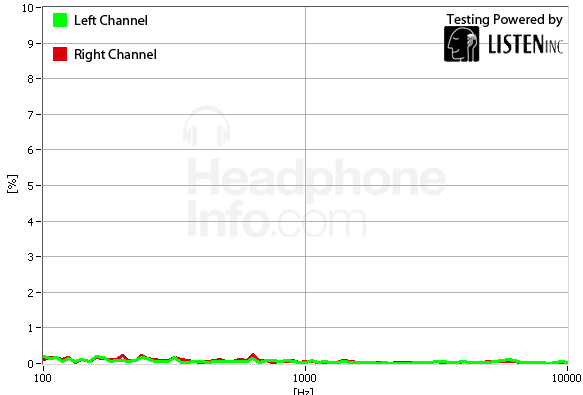
Click here for more information on our frequency response test.
Tracking
{{section_header}}{{section.name}}{{/section_header}}
It's not perfect, or even close, but the errors in channel preference found on the {{product.name}}s really aren't much to worry about. You may notice a swing to the right speaker in higher frequencies, but it's relatively minor.
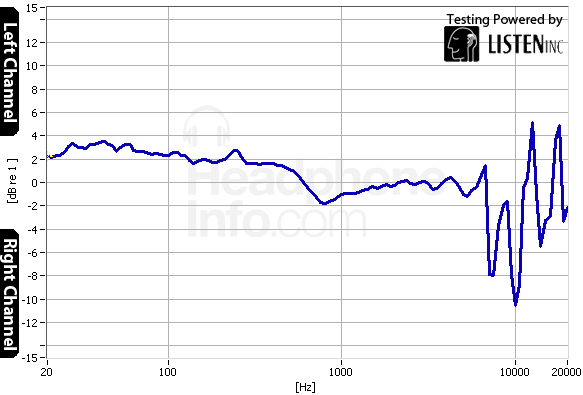
Click here for more information on our frequency response test.
Isolation
{{section_header}}{{section.name}}{{/section_header}}
If there's a bunch of high-end noise where you typically listen, the {{product.name}}s will block out quite a bit of it. Its attenuation is about par for the course when discussing over-ears, but this is a fairly decent score.

Click here for more information on our isolation test.
Leakage
{{section_header}}{{section.name}}{{/section_header}}
For whatever reason, the {{product.name}}s leak sound at volume, annoying all around you. It's a bit of a mystery as to why, but if you like to crank your tunes, just know that these headphones will telegraph exactly what you're listening to for all around you to hear.
Click here for more information on our leakage test.
Maximum Usable Volume
{{section_header}}{{section.name}}{{/section_header}}
Despite the {{product.name}}s' ability to blast music at 115.4dB (more than your average iPod can output) before hitting a 3% level of total distortion, we advise all of our readers to take our word for it, and not test it out for themselves. Seriously, you could damage your hearing.
Click here for more on our maximum usable volume test
Short-Term Use
{{section_header}}{{section.name}}{{/section_header}}
In the short term, the {{product.name}}s are actually quite comfortable. It's no surprise, really, as those giant foam ear pads are quite soft to the touch, and handle your ears well.

Extended Use
{{section_header}}{{section.name}}{{/section_header}}
In the long term, however, is where these headphones fall flat, as the band has almost no padding, and digs into your scalp due to the sheer heft of these cans. This problem was reported by several test subjects.
Customizability
{{section_header}}{{section.name}}{{/section_header}}
There really isn't much of anything at all you can do to customize these puppies, but that's pretty much standard for entry-level headphones. The cables don't come out, there aren't any replacement ear pads, and that's really okay.
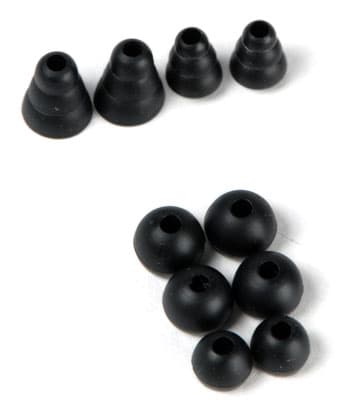
Cable Connectivity
{{section_header}}{{section.name}}{{/section_header}}
Dropping out of both sides of the {{product.name}}s is the flat cable, running about 4 feet long, and terminating in a 1/8th plug. There really isn't a whole bunch that's too interesting about this cable, but it works well with most mobile devices.
Portability
{{section_header}}{{section.name}}{{/section_header}}
Despite having a carrying pouch, these headphones are really not all that portable due in large part to their heft and bulk. Not only are the {{product.name}}s too big to be stowed in a small bag, but they are also quite heavy to carry around when not on your head.
Maintenance
{{section_header}}{{section.name}}{{/section_header}}
Should something happen to your {{product.model}}s, there's really nothing you can do to repair them. Additionally, there isn't much preventative maintenance you can perform on these either, so be sure to baby them if you can. To their credit, they don't really have any weak solder points, so the cable in unlikely to break.
Design
{{section_header}}{{section.name}}{{/section_header}}
It's very obvious that the Koss Porta Pros are very different by design, as they are build for portability over having huge drivers and ear pads. They're a bit more fragile, but definitely made for taking out and about.
Frequency Response
{{section_header}}{{section.name}}{{/section_header}}
Overall, the {{product.name}}s stay within our ideal limits better than the Porta Pros do, but they also overemphasize bass, which may not be for you.
Distortion
{{section_header}}{{section.name}}{{/section_header}}
The {{product.name}}s have a higher general level of distortion than the Porta Pros do.
Tracking
{{section_header}}{{section.name}}{{/section_header}}
Despite their general channel preference error, the Porta Pros have the more even tracking overall.
Isolation
{{section_header}}{{section.name}}{{/section_header}}
{{product.name}}s will prevent a bunch of high-end noise from reaching your ears, while the Porta Pros do not block out anything.
Comfort
{{section_header}}{{section.name}}{{/section_header}}
While both headphones are very comfortable in the short term, over the long haul the light Porta Pros seem to disappear on your head. The {{product.name}}s, on the other hand, dig into your scalp quite deep after a while, and become very annoying to wear unless you have very thick hair.
Verdict
{{section_header}}{{section.name}}{{/section_header}}
While both of these headphones were made for mobile devices, they are for two very different listeners. If you need to save as much money as possible, and value portability over having the best sound, the Porta Pros are for you. If you really like bass, and just want a set of headphones to bump your tunes as loud as it can go, the {{product.name}}s are more your speed.
Design
{{section_header}}{{section.name}}{{/section_header}}
Every aspect of the design of the Crossfade LP-2s is better engineered, sturdier, and all-around better polished than the {{product.name}}s. Not only are they insanely durable, but you can even customize the faceplates and the cable to the Crossfade LP-2s. You also pay a pretty penny for it.
Frequency Response
{{section_header}}{{section.name}}{{/section_header}}
While both emphasize bass, the Crossfade LP-2s are slightly more erratic.
Distortion
{{section_header}}{{section.name}}{{/section_header}}
The {{product.name}}s have a higher general level of distortion.
Tracking
{{section_header}}{{section.name}}{{/section_header}}
Neither set of headphones are perfect here, but the errors with the Crossfade LP-2s are less audible.
Isolation
{{section_header}}{{section.name}}{{/section_header}}
While the {{product.name}}s do block out high end noise better than the V-Moda cans, the Crossfade LP-2s attenuate a wider range of noise, and not just higher pitched noise.
Comfort
{{section_header}}{{section.name}}{{/section_header}}
Due to the {{product.name}}s' problems in extended listening sessions, users who like to use their cans on long commutes, or even at home will probably find the Crossfade LP-2s to be a bit more comfortable, if only for the band. The ear pads on the {{product.name}}s are quite nice, though.
Verdict
{{section_header}}{{section.name}}{{/section_header}}
While it is very true that you can get similar performance and a much more versatile, customizable and durable set of cans with the Crossfade LP-2s, you certainly pay for it. More expensive than the {{product.name}}s, bass lovers who are looking to save a bit of cash at the expense of durability and comfort might think twice about grabbing the V-Moda cans.
Design
{{section_header}}{{section.name}}{{/section_header}}
By design, the Audio-Technica cans are more durable, and a bit more versatile, as they have movable ear cups. They don't look as flashy or extreme, but that might appeal to some people.
Frequency Response
{{section_header}}{{section.name}}{{/section_header}}
The ATH-M50s don't emphasize bass as much, but they don't exactly stay within our ideal limits either. They do have a short range of underemphasis, but generally stack up well with the {{product.name}}s.
Distortion
{{section_header}}{{section.name}}{{/section_header}}
While the {{product.name}} has a small amount of general distortion, the ATH-M50s have a super-low distortion measure.
Tracking
{{section_header}}{{section.name}}{{/section_header}}
Overall, there are fewer egregious tracking errors with the ATH-M50s, but the {{product.name}} do maintain decently few channel preference errors in the low end.
Isolation
{{section_header}}{{section.name}}{{/section_header}}
Both have their advantages in noise attenuation: the ATH-M50s in the mids, and {{product.name}} in the high end of outside noise.
Comfort
{{section_header}}{{section.name}}{{/section_header}}
While both have their strengths and weaknesses in terms of comfort, the band of the Audio-Technica cans is much more effectively padded, and will not dig into your scalp as much as that of the {{product.name}} will. Still, this may not be as big of a concern for some, so as always, we advise trying each set out before you buy.
Verdict
{{section_header}}{{section.name}}{{/section_header}}
For a little bit extra, you can buy better audio quality and better comfort in the Audio-Technica ATH-M50s. However, if you really just need that super-strong bass, the {{product.name}} is a better fit for you, as well as roughly $40 cheaper, if you need to save the cash for other things.
Conclusion
{{section_header}}{{section.name}}{{/section_header}}
Issues with the metal band aside, the price you'd pay to nab the {{product.name}} off the shelf earns you a fun set of headphones if you are a bass lover. While they're flashy, and certainly look like they set you back a couple hundred bucks, they are at the sub $100 price point.
They aren't for everyone, though, as they certainly have their issues. Chief among these proverbial wet blankets is the fact that while the padding on the ear cups are very thick and plush, the band is almost unprotected, leaving the metal to dig into your scalp. In addition to their comfort issues, they have a frequency response that certainly isn't for everyone, and those who like to equalize their music might want to steer clear.
All that being said, the {{product.name}}s really aren't all that bad for under $100. Comfort is largely subjective, and there's a definite audience that Sony is targeting with these cans. If you've got about $100 to shell out, and you're not worried about grabbing whatever headphones score the best, and just want a bassy listening experience, the {{product.name}} could be for you.
Meet the tester
A seasoned writer and professional photographer, Chris reviews cameras, headphones, smartphones, laptops, and lenses. Educated in Political Science and Linguistics, Chris can often be found building a robot army, snowboarding, or getting ink.
Checking our work.
Our team is here to help you buy the best stuff and love what you own. Our writers, editors, and experts obsess over the products we cover to make sure you're confident and satisfied. Have a different opinion about something we recommend? Email us and we'll compare notes.
Shoot us an email

